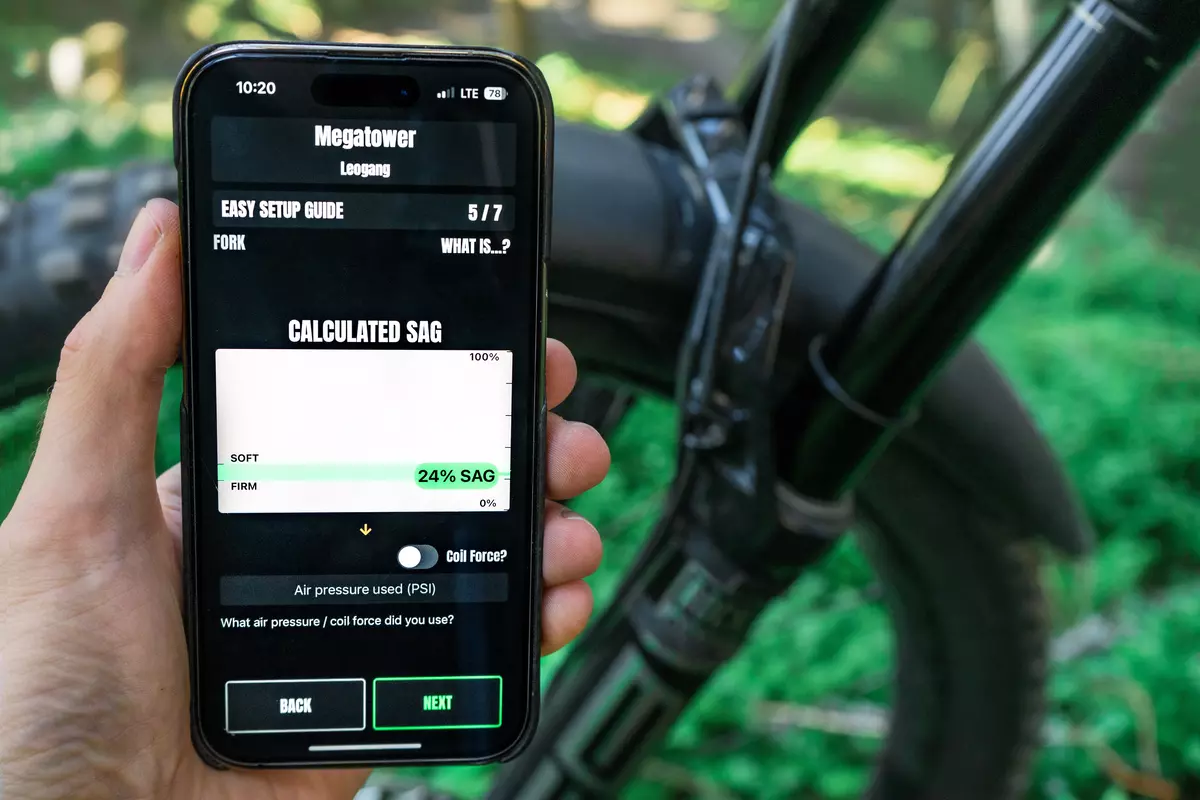
Suspension setup calculator – A great feature of SAGLY
Settings explained and SAGLY’s Suspension setup calculator app
In this second part of the blog post suspension setup settings and their effects we want to explain some more settings. Especially what each setting does and which effect it has is important to understand. So we collected some info about this topic in this post. Further information about settings, you can find in the SAGLY app, which has a suspension setup calculator integrated.
1) High Speed Compression
High Speed Compression is usually a blue dial or lever. High Speed Compression (HSC) damping adjustment controls compression stroke speed, or the rate at which the suspension compresses, during quick compression scenarios. HSC affects bump impact absorption and efficiency over large and square edge bumps, and down drops.
(-) (open/counter-clockwise/minus):
Turning the dial in the “-” (minus) or “Soft” direction makes the suspension feel softer during a very quick compression. May allow quick bottom out when riding quickly over and through larger bumps and drops.
(+) (closed/clockwise/plus):
Suspension that has too much High Speed Compression will feel harsh during a very quick compression. More plus clicks has the effect that suspension travel used on bumpier terrain may be limited and may vary depending on bump or drop size. This can prevent premature bottom out when riding over and through larger impacts.
2) Preload
Important: Never turn Preload more than 2 turns. Essentially, preload means that the spring is pushing outward on the shock before the shock has even started compressing. To make the shock start to compress, you have to overcome that preload force.
The more turns clockwise: You have to put more force on the shock to get it to move.
The less turns clockwise: Less force on the shock gets it to move.
3) Rebound
Rebound is usually a red dial or lever. Suspension movement when the wheel extends. It occurs as the spring forces the shock, or fork, to extend.
(-) (open/counter-clockwise/minus/rabbit):
Extension is faster.
(+) (closed/clockwise/plus/turtle):
Extension is slower.
4) SAG & SAGLY’s suspension setup calculator
Often yes, usually rear shocks run 100-200 psi, but fork psi varies a lot, depending on the design. Get the SAG around 25% (maybe slightly less SAG in the front than the rear) and see how it rides (that’s what really matters), adjust on the trail as needed. In the SAGLY app, you can find a suspension setup calculator for your SAG. This helps you find the ideal SAG settings for your mountain bike.
More Pressure:
SAG is smaller and compression is harder.
Less Pressure:
SAG is higher, less travel and compression is softer.
5) HBO
HBO only works in the last part of the travel; It prevents fork form bottoming-out. So you can run compression damping to suit the bumps rather than the jumps and still not punish the fork.
6) Air pressure tires
Proper tire pressure lets your bike roll quickly, ride smoothly, and avoid flats. Narrow tires need more air pressure than wide ones: Mountain tires, 25 to 35 psi – generally with more air in the rear than the front. This is because more of your weight is on the rear, so it needs more support.
More Pressure:
Faster riding but less grip.
Less Pressure:
Slower riding but more grip.
Try SAGLY’s Suspension setup calculator
So we hope you learned something reading this blog post. And do not forget to download SAGLY for free, and use the integrated suspension setup calculator for your SAG. Moreover you will find many handy features for your suspension settings tuning and bike maintenance. Happy riding!
Download SAGLY, a complete mobile guide, which helps you set up your MTB settings and maintain your bike.

